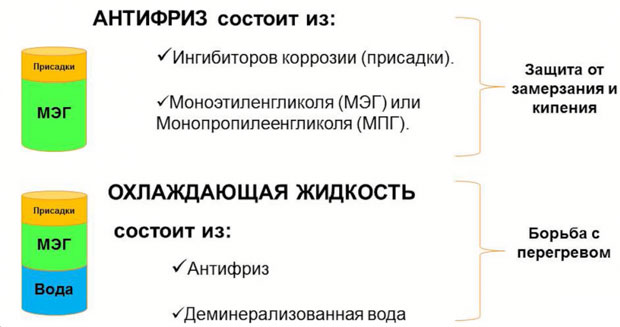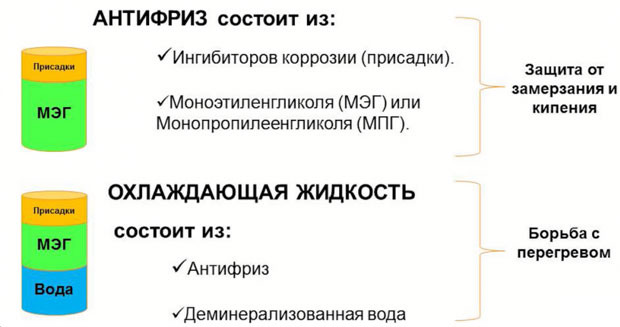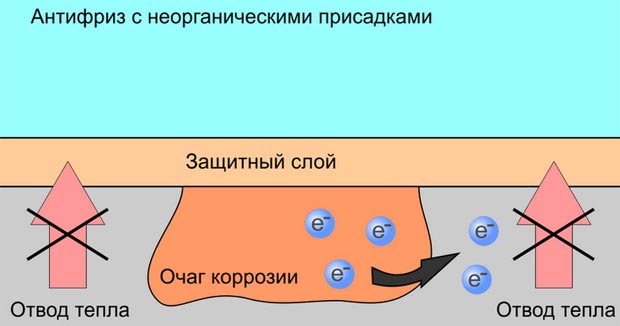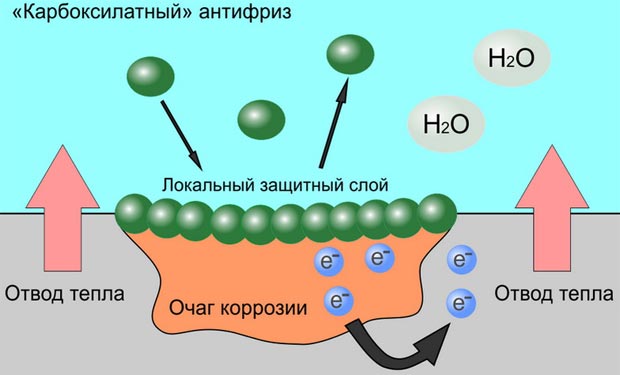
The chemical composition of antifreeze g11, g12, g13
Component composition
The basis of coolants (coolants) is distilled water mixed with mono- and polyhydric alcohols in various proportions. Corrosion inhibitors and fluorescent additives (dyes) are also introduced in concentrates. Ethylene glycol, propylene glycol or glycerin (up to 20%) is used as an alcohol base.
- water distillate
Purified, softened water is used. Otherwise, scale in the form of carbonate and phosphate deposits will form on the radiator grill and pipeline walls.
- Ethanediol
Dihydric saturated alcohol, colorless and odorless. Toxic oily liquid with a freezing point of -12 °C. Has lubricating properties. To obtain ready-made antifreeze, a mixture of 75% ethylene glycol and 25% water is used. The content of additives is ignored (less than 1%).
- Propanediol
It is also propylene glycol - the closest homologue of ethanediol with three carbon atoms in the chain. Non-toxic liquid with a slight bittersweet taste. Commercial antifreeze may contain 25%, 50%, or 75% propylene glycol. Due to the high cost, it is used less frequently than ethanediol.


Types of additives
Ethylene glycol antifreeze for cars oxidizes during long-term operation and forms glycolic, less often formic acid. Thus, an acidic environment unfavorable for the metal is created. To exclude oxidative processes, anti-corrosion additives are introduced into the coolant.
- Inorganic corrosion inhibitors
Or "traditional" - mixtures based on silicates, nitrate, nitrite or phosphate salts. Such additives act as an alkaline buffer and form an inert film on the metal surface, which prevents the effects of alcohol and its oxidation products. Antifreezes with inorganic inhibitors are marked with the designation "G11" and have a green or blue color. Inorganic inhibitors are included in the composition of antifreeze, a domestically produced coolant. Service life is limited to 2 years.


- Organic Inhibitors
Due to the limited resource of inorganic inhibitors, more environmentally friendly and chemically resistant analogues, carboxylates, have been developed. Salts of carboxylic acids do not shield the entire working surface, but only the center of corrosion, covering the area with a thin film. Designated as "G12". Service life - up to 5 years. They are red or pink in color.


- Mixed
In some cases, "organics" are mixed with "inorganics" to obtain hybrid antifreezes. The liquid is a mixture of carboxylates and inorganic salts. Duration of use is no more than 3 years. Green color.
- Lobrid
The composition of the concentrate in such a case includes mineral reagents and organic anti-corrosion additives. The former form a nanofilm over the entire surface of the metal, the latter protect damaged areas. The term of use reaches 20 years.
Conclusion
The coolant lowers the freezing point of water and reduces the coefficient of expansion. The chemical composition of antifreeze is a mixture of distilled water with alcohols, and also includes corrosion inhibitors and dyes.


Watch this video on YouTube

